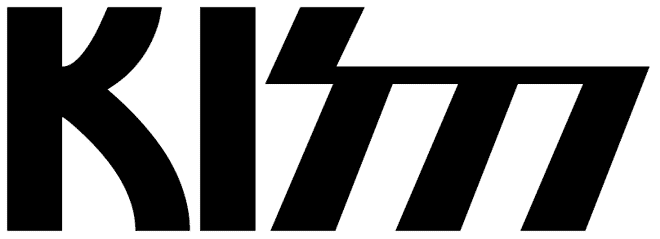It’s this one thing that’s got me trippin
{ IHOP commercial, 1969 }
{ IHOP commercial, 1969 }

{ 1. Luke Stephenson | 2. Romain Laurent | In Western Europe, military bows became obsolete during the C16th as firearms evolved. But in China, guns and bows coexisted for almost a millennium. Now one scientist thinks he knows why. | The Physics arXiv Blog | full story }

The longest-lived of camera films has just ended its 75-year history. The only laboratory that still processed Kodachrome, the first commercially available colour slide film, stopped doing so at the end of last year. Kodak progressively withdrew the film from sale between 2002 and 2009, though many photographers loved it enough to buy large stocks to keep in their freezers. Amateurs cannot develop Kodachrome, which requires a large number of carefully controlled treatments, so, with the end of laboratory processing, the film is finished.
Kodachrome is made up of layers of black and white film, each of which responds differently to coloured light, and a series of filters. Only during processing are the appropriate dyes added to each layer to produce a colour transparency. Compared to other colour films, at least up until 1990 when Fuji introduced the garish Velvia, Kodachrome had unique advantages: its colours were rich and naturalistic, its blacks did not have the greyish cast of so many colour films, it had remarkable contrast, its greys were subtle, and the lack of colour couplers between its layers (which tend to diffuse light) gave the film extraordinary sharpness.
photo { Arnaud Pyvka }

In a study of 98 languages from a variety of linguistic families, they found the following “rules” seem to apply:
1. All languages contain terms for white and black.
2. If a language contains three terms, then it contains a term for red.
3. If a language contains four terms, then it contains a term for either green or yellow (but not both).
4. If a language contains five terms, then it contains terms for both green and yellow.
5. If a language contains six terms, then it contains a term for blue.
6. If a language contains seven terms, then it contains a term for brown.
7. If a language contains eight or more terms, then it contains a term for purple, pink, orange, grey, or some combination of these.
artwork { Mark Rothko, Red and Black, 1959 }
Exquisite corpse is a method by which a collection of words or images is collectively assembled. The technique was invented by Surrealists and is similar to an old parlour game called Consequences in which players write in turn on a sheet of paper, fold it to conceal part of the writing, and then pass it to the next player for a further contribution. André Breton writes that the game developed at the residence of friends in an old house at 54, rue du Chateau in Paris. In the beginning were Yves Tanguy, Marcel Duchamp, Jacques Prévert, Benjamin Peret, Pierre Reverdy, and André Breton. Other participants probably included Joan Miró, Man Ray, René Char, Paul Éluard… The name is derived from a phrase that resulted when Surrealists first played the game, “Le cadavre exquis boira le vin nouveau.” (”The exquisite corpse will drink the new wine.”)

{ 1. issuu | 2. Jaimie Warren }

{ Assistants at work in Takashi Murakami’s New York Studio. | Five art superstars in their studios | The Guardian | full story }

Loud bangs, bright flashes, and intense shocks capture attention, but other changes – even those of similar magnitude – can go unnoticed. Demonstrations of change blindness have shown that observers fail to detect substantial alterations to a scene when distracted by an irrelevant flash, or when the alteration happen gradually.
Here, we show that objects changing in hue, luminance, size, or shape appear to stop changing when they move. This motion induced failure to detect change, silencing, persists even though the observer attends to the objects, knows that they are changing, and can make veridical judgments about their current state. Silencing demonstrates the tight coupling of motion and object appearance.
During silencing, rapidly changing objects appear nearly static, which raises an immediate question: What is the perceived state at any given moment? To illustrate, consider an observer who fails to notice an object change gradually from yellow to red. One possibility is that the observer always sees yellow, never updating his percept to incorporate the new hue – this is freezing, erroneously keeping hold of an outdated state. Another possibility is that he always sees the current hue (e.g. yellow, orange, then red) but is unaware of the transition from one to the next – this is implicit updating.
{ Motion Silences Awareness of Visual Change via Thoughts on thoughts | Continue reading }
photo { Christopher Williams }

Tracey Emin’s Everyone I Have Ever Slept With 1963–1995 was a tent appliquéd with 102 names of the people she had slept with up to the time of its creation in 1995. The title is often misinterpreted, it is to be taken as a literal statement: “Some I’d had a shag with in bed or against a wall some I had just slept with, like my grandma.” The names include family, friends, drinking partners, lovers and even two numbered foetuses.
In 2004, the tent was destroyed in a fire at the East London Momart warehouse, along with two of Emin’s other works and some 100 more from Saatchi’s collection, including works by Damien Hirst, Jake and Dinos Chapman and Martin Maloney.

Harder-to-read fonts boost student learning. Connor Diemand-Yauman and his colleagues think the effect occurs because fonts that are more awkward to read encourage deeper processing of the to-be-learned material.

My most useful mental trick involves imagining myself to be far more capable than I am. I do this to reduce the risk that I turn down an opportunity just because I am clearly unqualified.